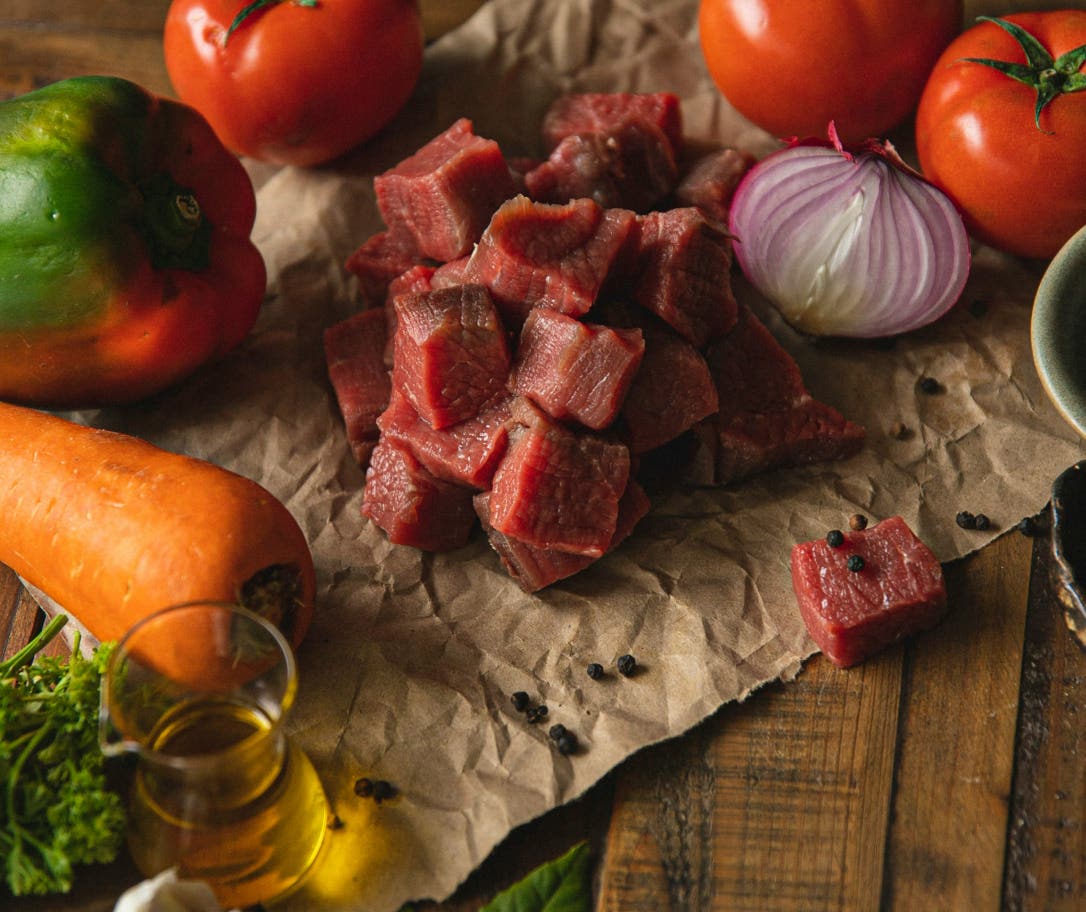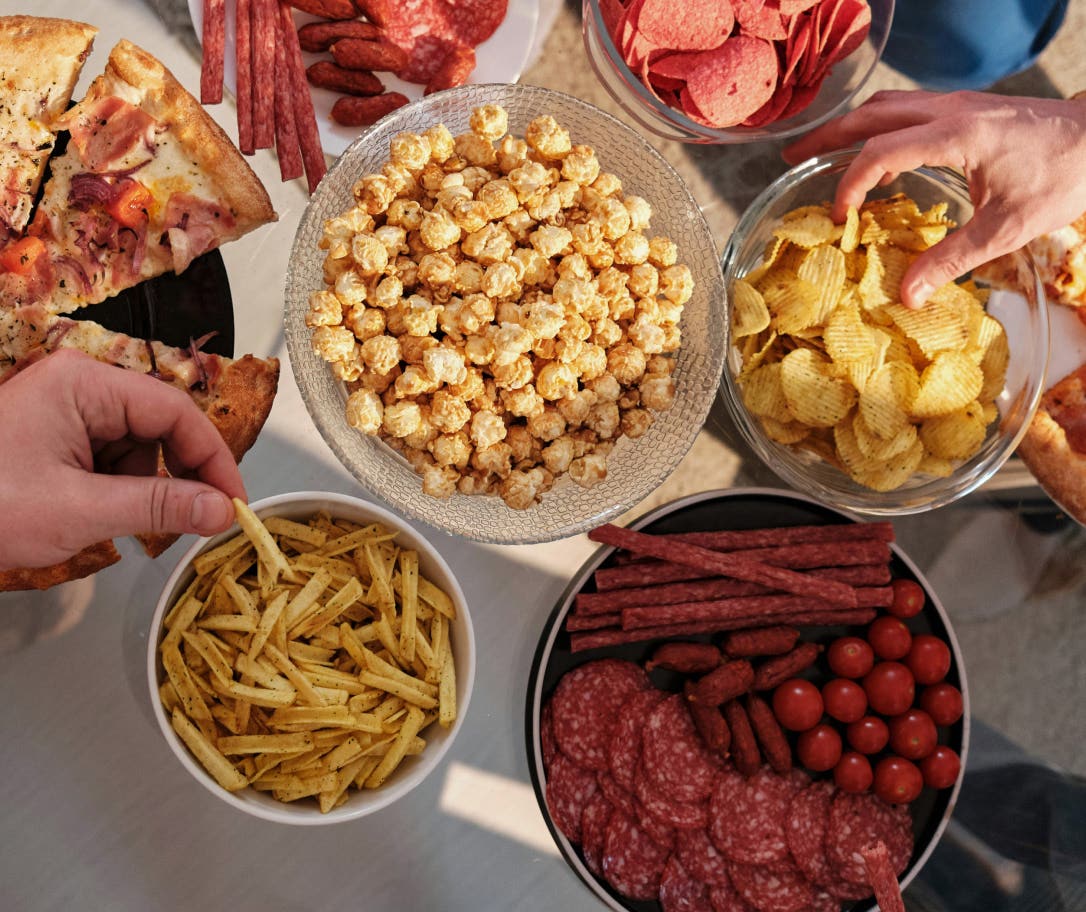Processed foods have long been demonized in the health and wellness industry, while whole foods – or foods closest to their natural state – are upheld as the golden standard.
However, many of the foods we eat undergo some level of processing, so processing isn’t always bad; it’s about the extent of processing and for what reason. So, is all the backlash against processed foods justified? Well, kind of. Let’s dig in.

What are whole foods?
"Eat more whole foods" is often recommended as a way to improve your health or get fit, but what does it really mean?
First, let’s break down what whole foods are. Whole foods are foods that contain one ingredient and are unprocessed or minimally altered.
They remain as close to their natural state as possible without added sugars, flavorings, starches, or other artificial ingredients.
Whole food examples
Whole foods come in all sorts of shapes, sizes, colors, and textures. You may be surprised at what constitutes a whole food too.
- Vegetables and whole fresh fruits: carrots, squash, spinach, apples, pineapples, tomatoes, cucumber, kale, berries
- Minimally processed plant proteins: kidney beans, chickpeas, pinto beans, runner beans, broad beans, butter beans, edamame, garden peas, lentils
- Minimally processed animal proteins: oily fish, eggs, chicken, turkey, beef, lamb, pork
- Minimally processed whole grains: brown rice, quinoa, buckwheat, millet, whole barley and oats
- Minimally processed healthier fats: seed or olive oil, natural or Greek yogurt, nuts, and seeds
What are the nutritional benefits of whole foods?
A diet rich in whole foods has several health benefits.
One of the key advantages of whole foods is they are rich in dietary fiber and polyphenols that can have antioxidant and anti-inflammatory benefits. Fiber is critical for a healthy diet and has the following health benefits:
- reduced risk of heart or cardiovascular disease
- lower risk of diabetes
- better digestion1
Whole foods also have no added saturated fats, salt, or sugar. So, eating lots of whole foods can lower the unnecessary additives that are present in the typical Western diet. This can help regulate cholesterol levels, blood pressure, and even body weight.
Whole foods are also often packed with many of the essential vitamins and minerals your body needs to function properly, limiting the prevalence of nutrient deficiencies.2

What are processed foods?
Processed foods are foods and drinks that have been changed from their original form when they are made or prepared. There are several reasons for processing, such as:
- making them safe to eat or drink
- changing how the food looks or tastes
- to make them more suitable for further use
- extending their shelf life at the grocery store (arguably one of the main reasons)
- creating snacks and ready meals
Types of processed foods
Processed foods can be:
- Minimally processed – foods that have been cleaned, chopped, or frozen but keep their original nutritional profile, such as frozen fruits, bagged spinach and salad leaves, rolled oats, or extra virgin olive oil.
- Moderately processed – foods that have added ingredients, perhaps to improve flavor or function, such as canned soups and beans, roasted nuts, or bread.
- Ultra-processed – foods that have been heavily changed and often include artificial flavors, preservatives, or additives like frozen pizza, sodas, instant noodles, fast food, sweets and chocolate, ice cream, pies, and pasties.3 These are often classified as “junk foods”.
How do whole foods and processed foods compare?
Whole foods | Minimally processed foods | Ultra-processed foods | |
Nutritional value | High in vitamins, minerals, antioxidants, and fiber | Retains most of its nutritional value | Most of the nutrients are lost; it may be fortified but often lacks fiber and naturally occurring nutrients |
Additives | None | Minimal e.g. vitamin fortification or natural preservatives | High in sugar, fat, artificial flavors, colors, and preservatives |
Ingredients | Single-ingredient | A few added ingredients e.g. salt to canned beans or oil in roasted nuts | Often contains many additives, preservatives, artificial flavors, and colors |
Shelf life | Short | Moderate | Long |
Impact on health | Associated with a lower risk of chronic disease, better digestion, weight control, and cognition | When nutrient-dense, minimally processed foods can support health and contribute to good nutrition | Associated with an increased risk of disease and health conditions like obesity, heart disease, and inflammation |
Satiety | Increased satisfaction and reduced levels of hunger because of high fiber, protein, or healthy fat content | Moderate but depends on the level of processing and ingredients | Low and can be engineered to encourage overeating |
Cost | Usually higher per unit | Moderate and depends on the type | Low upfront cost but leads to long-term health expenses |
Convenience | Requires preparation | Convenient with minimal preparation required | Very convenient, often ‘heat and serve’ or ‘ready to eat’ |
Which processed foods should you limit or avoid?
As we mentioned in our 80/20 rule for nutrition article, you don’t have to give up your favorite indulgences to lead a healthy, fit life. And the same principle applies to processed foods.
It’s okay to enjoy your favorite snack or processed treat now and then, as long as it’s in moderation, and the majority of your diet consists of whole or minimally processed foods.
When you are choosing which foods to eat, the ones you should really think twice about are highly processed foods that are high in saturated fat, salt, and sugar. These foods aren’t necessary for our diet or health and should be consumed in small amounts and not often. They include foods like:
- Sugary or sweetened drinks
- Potato chips
- Ice cream
- Cakes and cookies
- Sweets and chocolate
- Pies and pastries
- Ready meals

How to make smarter food choices
Eating healthily or increasing your consumption of whole foods doesn’t need to be complicated or require lots of effort. It’s all about making small, sustainable dietary changes that can have a positive impact on your health.
Here are some of the practical things you can do to help you make smarter food choices:
- Add a fruit or vegetable to every meal – Adding one piece of fruit or vegetable to every meal and snack you eat will boost your nutrient intake. Examples include adding a side of steamed broccoli to dinner or a handful of fresh berries to a bowl of breakfast granola.
- Stay hydrated – Swap sugary fizzy energy drinks for water or herbal teas. If you struggle to drink plain water or simply find it boring, try adding a slice of lemon or cucumber and mint for a refreshing twist.
- Read food labels – Become a savvy shopper by checking out the food labels on packages and checking ingredient lists. Choose foods that have fewer additives and more recognizable ingredients, especially when selecting packaged foods.
- Choose wholegrains – Choose whole grain versions of staple foods like bread, rice, and pasta because they are rich in fiber and nutrients, contribute to better digestion, and will leave you feeling satisfied for longer.
- Cook from scratch at home – Preparing meals yourself puts you in control of the ingredients and portion sizes. This helps minimize the intake of unnecessary additives and avoid excessive levels of salt and sugar. It’s also a great way to experiment with new flavors and textures.
Let’s recap
Eating healthily isn’t about banning processed foods from your diet altogether. It’s about making smart choices – prioritizing whole foods, while intentionally incorporating minimally processed options (especially those that make it easier for you to cook yourself a great meal).
Food is meant to be enjoyed – it’s a major component of living a fulfilled life. That’s why finding the right balance is key to sticking with healthy habits and enjoying the ride. Remember, we’re in it for the long haul.
Sources
[1] Esquivel M. K. (2022). Nutrition Benefits and Considerations for Whole Foods Plant-Based Eating Patterns. American journal of lifestyle medicine, 16(3), 284–290. https://doi.org/10.1177/15598276221075992
[2] Espinosa-Salas S, Gonzalez-Arias M. Nutrition: Macronutrient Intake, Imbalances, and Interventions. [Updated 2023 Aug 8]. In: StatPearls [Internet]. Treasure Island (FL): StatPearls Publishing; 2024 Jan-. Available from: https://www.ncbi.nlm.nih.gov/books/NBK594226/
[3] NHS. (2023). Processed Foods. Available at: https://www.nhs.uk/live-well/eat-well/how-to-eat-a-balanced-diet/what-are-processed-foods/